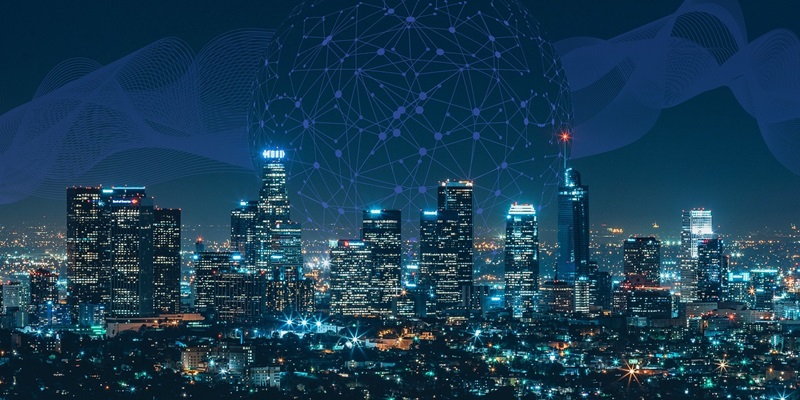The emergence of 5G has opened up a new realm of possibilities for enterprises, promising faster speeds, lower latency, and increased connectivity. More importantly, it has brought to the fore the significant potential to enhance enterprise security. As businesses become increasingly dependent on their digital infrastructure, the need to safeguard data becomes critical. Private 5G networks, with their advanced capabilities, are emerging as the fortresses within which businesses can protect their most valuable assets.
The Incentive for Private 5G in Enterprise Security
For many enterprises, the allure of private 5G networks lies in their ability to offer heightened security over public networks. By keeping data transmission and communication within the private infrastructure, businesses can guard against the vulnerabilities often exploited on public mobile networks. This secure private network becomes a controlled environment for transferring and processing corporate data, a veritable shield against the siege of cyber threats that can lead to infrastructural compromise and data breaches. With the consequences of such breaches being financially ruinous and damaging to reputation, the security benefits of private 5G networks offer a compelling incentive to businesses.
Moreover, the sovereignty of data is a critical consideration for enterprises. In an age where data has become currency, maintaining control over this asset is of paramount importance. Private 5G networks ensure that sensitive information doesn’t leave the protective boundary of the enterprise, thus reinforcing the commitment to data sovereignty and bolstering the enterprise’s defense against unauthorized access.
Managing Security Risks Comparable to Wi-Fi
Security risks within Wi-Fi networks are well-established, and private 5G networks encounter similar challenges that enterprises must address. Industrial sectors, in particular, are deploying an increasing number of IoT devices and require robust security solutions to protect their complex operational ecosystems. By applying a zero-trust security architecture, businesses can ensure that network access is tightly regulated, with each device undergoing stringent verification processes. Such measured precautions are crucial in maintaining a secure operational framework, particularly when considering the elevated access points and the numerous endpoints typical of industrial IoT settings.
In addition to zero-trust architecture, network segmentation can play a pivotal role in enhancing the security of private 5G networks. It enables enterprises to create separate sections within their networks, thus isolating and containing potential breaches to minimize impact. This not only enhances the overall integrity of the network but also limits the lateral movement of cyber attackers, making it more challenging for them to compromise sensitive systems and data.
APIs and Web Application Firewalls
In the secure ecosystem created by private 5G networks, API and application security becomes crucial layers of defense. The network is populated with devices and applications that rely on APIs for communication, and these intersections become potential points of vulnerability if not adequately protected. Robust API security protocols ensure that the communication channels remain sealed off from malicious entities. Similarly, web application firewalls are essential in deflecting cyber attacks that target applications. Together, these security features form a protective barrier, fortifying the enterprise’s applications against the diverse range of threats that exist today.
Considering the nature and complexity of cyber threats, the security measures to protect APIs and applications must be dynamic, ready to confront evolving risks. Adaptive authentication methods, encryption techniques, and continuous monitoring capabilities provide the resilience necessary for a secure private 5G network, ensuring that defenses are not only robust but also responsive to the ever-changing threat landscape.
The Evolving Threat Landscape with 5G
The advent of 5G does not, in itself, magnify the threat landscape but rather equips enterprises with sophisticated tools to manage their networks. By adopting private 5G networks, businesses are empowered with superior oversight capabilities, establishing parameters that oversee access control and data handling within their digital domain. This enhanced management infrastructure provides organizations with a highly secure environment that effectively mitigates the risk of sensitive data exposure beyond the enterprise’s virtual boundaries.
The responsibility to secure the private 5G network, however, extends beyond establishing control mechanisms. It requires a proactive approach to security, with trainings and protocols in place to educate and equip employees on how to handle data securely. By fostering a culture of security awareness, the private 5G network’s control mechanisms are complemented by informed and cautious use, solidifying its role as a safeguard against cyber threats.
Emphasizing Continuous Monitoring and Updating
The advent of 5G technology heralds a new era for businesses, offering unprecedented faster speeds and connectivity with ultra-low latency. This next-gen wireless network is not only a game-changer for efficiency and communication but also stands to revolutionize enterprise security. As companies increasingly rely on digital operations, protecting sensitive data becomes crucial. Private 5G networks stand out in this landscape, providing a secure environment where businesses can safeguard their critical digital assets. These private networks offer tailored security, ensuring that a company’s data remains protected against the ever-evolving cyber threats. By investing in private 5G infrastructures, enterprises can enjoy both the speed of the new technology and the peace of mind that their information is secure within these modern digital sanctuaries.

